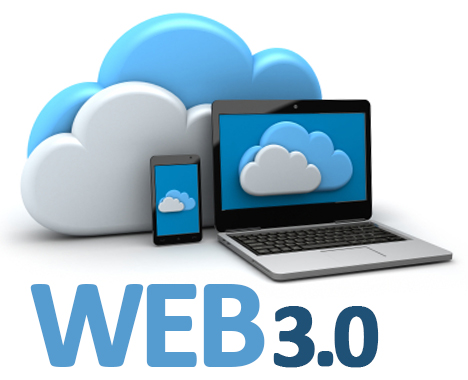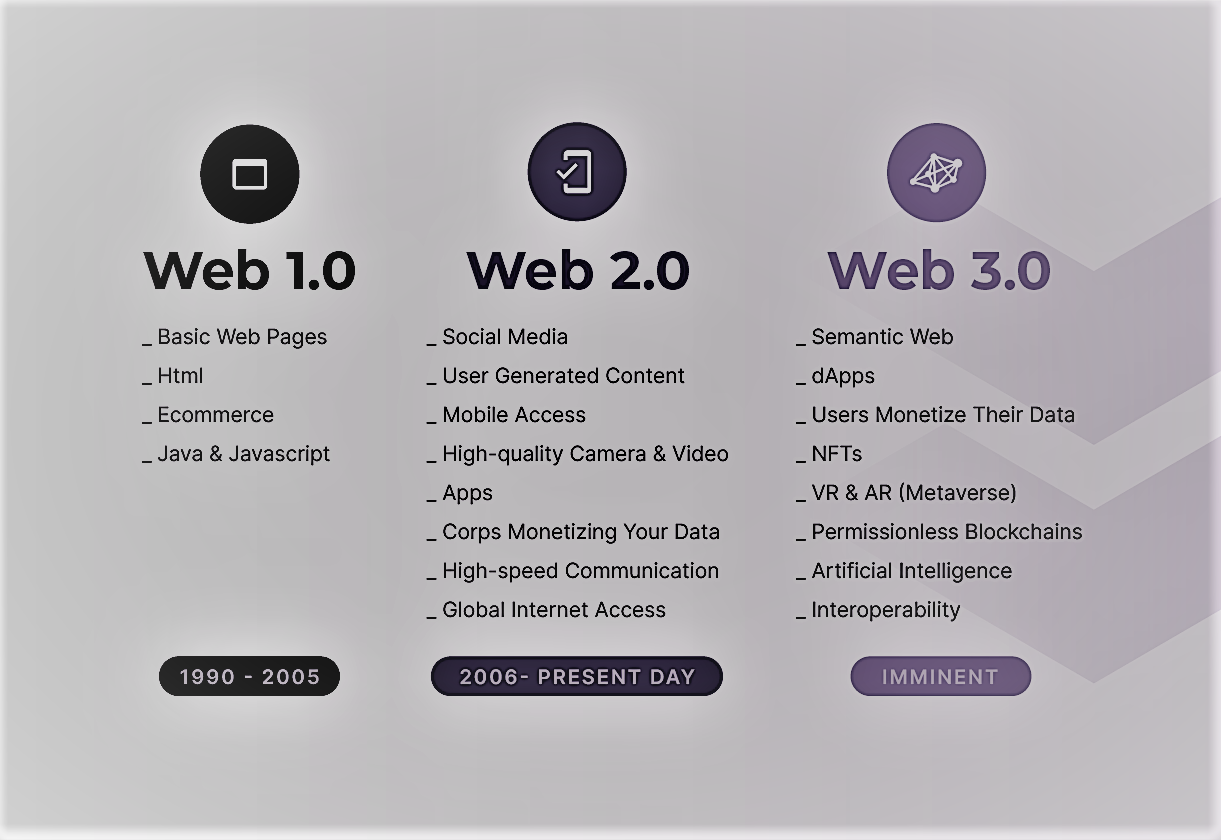 (209) 273-3999
(209) 273-3999 (209) 273-3999
(209) 273-3999


The new era of computing is already here. The Internet of Things (IoT), blockchain, augmented reality, and other technologies have expanded the horizon of opportunities such that the old Web 2.0 term no longer describes the new Internet reality. Web 3.0 is now entering the vocabulary, however, due to the novelty of the concept, there is currently no unanimity as to how Web 3.0 should be "defined". Web 3.0 is also called the Internet 3.0, and it normally refers to the third generation of Internet technology, which allows for more sophisticated and advanced interactions between devices and users. It is also called the semantic web or the spatial web.
If you break the evolution of the internet into segments with the first being simple web pages and the second being apps, social media, and mass adoption, the emerging blockchain-based web would be internet 3.0.
Web 1.0 and Web 2.0 usually keep resources centralized to a few locations. The user has a computing device that accesses a URL via HTTP. The URL translates to a specific server which might draw content from a few other similar systems. This has changed dramatically with Web 3.0.
The weakest phone today is comparable to supercomputers from a decade back. Web 3.0 leverages the vast amount of power in even the smallest client systems. The web servers now use cloud computing to abstract various file locations or databases over multiple systems. Even code in web applications might come from multiple sources.
AI is a form of machine learning which lets computers act as semi-autonomous agents. Web 3.0 finally turns this potential into reality. At the moment, a lot of this power is going into commerce. One of AI's biggest strengths is pattern recognition. Machine learning is excellent at comparing spending patterns to determine what products people would like. But the future of AI in Web 3.0 is limitless.
Anything that requires decision-making can benefit from AI's access to unlimited information and blindly fast speeds. Even sectors like medication development and manufacturing are starting to see solid returns from AI-powered systems.
It's important to remember that Web 3.0 technologies are usually interconnected. Some of the strongest AI consists of many smaller processors linking together to form something unique. That same technique can apply to the average person's life as well.
The Internet of Things (IoT) is a part of Web 3.0, linking everyday items. Consider a fridge that adds items to the grocery list. Or the usefulness of blinds that can recognize when the sun's warming the home up too much. Web 3.0 links servers, programs, and apps together. And the IoT is growing too.
Web 3.0 also works on a trustless and permissionless platform. Trustless refers to the fact that there's no need for a trusted gatekeeper. Users can encounter each other just as they would in the real world - without 3rd party's go-ahead. Permissions imply something similar but still distinct. Permissionless systems imply that anyone can participate in a process without the authorization of a governing body.
Trustless and permissionless systems are exemplified by metaverse implementations that users create. These Web 3.0 systems let people access and even create virtualized environments. People can create open worlds for each other.

The top three searches on Google attribute this term to three different people, however, it was Tim Berners-Lee who spoke about the original concept of a semantic web. In 1999, talking of his vision for the future, Berners-Lee said:
"I have a dream for the Web [in which computers] become capable of analyzing all the data on the Web - the content, links, and transactions between people and computers. A "Semantic Web", which makes this possible, has yet to emerge, but when it does, the day-to-day mechanisms of trade, bureaucracy and our daily lives will be handled by machines talking to machines. The "intelligent agents" people have touted for ages will finally materialize."
While the 'semantic web' envisioned by Berners-Lee and 'Web 3.0' are not exactly the same thing, they are often used interchangeably.